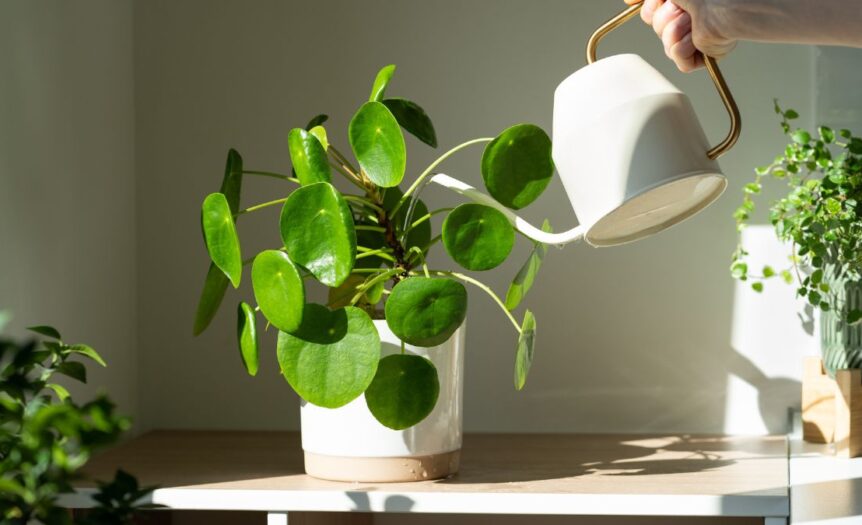If you want to keep your indoor plants healthy, fertilizer is essential to the equation. Fertilizer provides the nutrients that help fuel healthy growth and development in your plants.
Read on to explore some different reasons why indoor plants need fertilizer and how to use it correctly to achieve the best results.
The Benefits of Fertilizer for Indoor Plants
Fertilizer helps give indoor plants the essential nutrients they need to grow strong and healthy. Without fertilizer, your plants will have difficulty reaching their full potential because they are not getting all the necessary nutrients from the soil alone. Furthermore, fertilizer can also help promote stronger root systems in your plants, making them more resilient against environmental stressors such as temperature fluctuations or sudden shifts in light levels.
Using Fertilizer Safely on Indoor Plants
It’s important to remember that too much indoor plant fertilizer can be just as bad as too little. Overfertilizing can lead to nutrient burn, stunting growth, or even plant death. It’s best practice to start with small doses and gradually increase them over time until you see the desired results. Additionally, always water your plant thoroughly after applying any fertilizer. This water will help ensure the nutrients properly absorb into the surrounding soil instead of simply leaching away into the environment where they won’t do any good.
Things To Consider When Choosing Fertilizer for Your Indoor Plants
When selecting fertilizer for your indoor plants, it is necessary to consider the type of plant you have and its needs. Different types of plants require different kinds of fertilizers to thrive, so be sure to match a fertilizer to your plant species before making a purchase. Additionally, organic and all-natural fertilizers are available on the market that may be better for indoor plants than traditional chemical fertilizers.
Overall, using fertilizer on indoor plants is crucial to keeping them healthy and thriving. It provides them with essential nutrients they may not otherwise receive from the soil alone. When selecting a type of fertilizer for your needs, read the label carefully to choose one that suits those needs best. And finally, when applying any kind of fertilizer, always remember to start small and gradually increase fertilizer usage while watering your plant thoroughly after each application. With these tips, you should have no problem keeping your indoor plants happy and healthy.










 Deering Estate
Deering Estate
 Massage Envy South Miami
Massage Envy South Miami
 Calla Blow Dry
Calla Blow Dry
 My Derma Clinic
My Derma Clinic
 Sushi Maki
Sushi Maki
 Sports Grill
Sports Grill
 The Healthy Kitchen
The Healthy Kitchen
 Golden Rule Seafood
Golden Rule Seafood
 Malanga Cuban Café
Malanga Cuban Café

 Kathleen Ballard
Kathleen Ballard
 Panter, Panter & Sampedro
Panter, Panter & Sampedro
 Vintage Liquors
Vintage Liquors
 The Dog from Ipanema
The Dog from Ipanema
 Rubinstein Family Chiropractic
Rubinstein Family Chiropractic
 Your Pet’s Best
Your Pet’s Best
 Indigo Republic
Indigo Republic




 ATR Luxury Homes
ATR Luxury Homes


 2112 Design Studio
2112 Design Studio
 Hamilton Fox & Company
Hamilton Fox & Company
 Creative Design Services
Creative Design Services
 Best Pest Professionals
Best Pest Professionals
 HD Tree Services
HD Tree Services
 Trinity Air Conditioning Company
Trinity Air Conditioning Company
 Cisca Construction & Development
Cisca Construction & Development
 Mosquito Joe
Mosquito Joe
 Cutler Bay Solar Solutions
Cutler Bay Solar Solutions


 Miami Royal Ballet & Dance
Miami Royal Ballet & Dance
 Christopher Columbus
Christopher Columbus
 Pineview Preschools
Pineview Preschools
 Westminster
Westminster
 Carrollton
Carrollton
 Lil’ Jungle
Lil’ Jungle
 Frost Science Museum
Frost Science Museum
 Palmer Trinity School
Palmer Trinity School
 South Florida Music
South Florida Music
 Pinecrest Orthodontics
Pinecrest Orthodontics
 Dr. Bob Pediatric Dentist
Dr. Bob Pediatric Dentist
 d.pediatrics
d.pediatrics
 South Miami Women’s Health
South Miami Women’s Health

 The Spot Barbershop
The Spot Barbershop
 My Derma Clinic
My Derma Clinic




 Miami Dance Project
Miami Dance Project

 Rubinstein Family Chiropractic
Rubinstein Family Chiropractic
 Indigo Republic
Indigo Republic

 Safes Universe
Safes Universe
 Vintage Liquors
Vintage Liquors
 Evenings Delight
Evenings Delight





 Atchana’s Homegrown Thai
Atchana’s Homegrown Thai
 Baptist Health South Florida
Baptist Health South Florida

 Laser Eye Center of Miami
Laser Eye Center of Miami
 Visiting Angels
Visiting Angels
 OpusCare of South Florida
OpusCare of South Florida

 Your Pet’s Best
Your Pet’s Best





 HD Tree Services
HD Tree Services
 Hamilton Fox & Company
Hamilton Fox & Company


 Creative Design Services
Creative Design Services